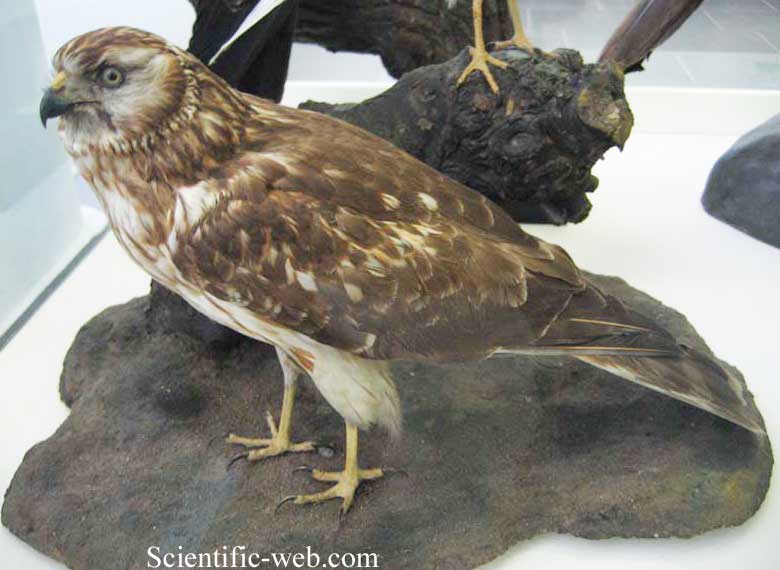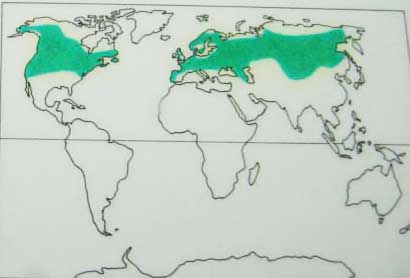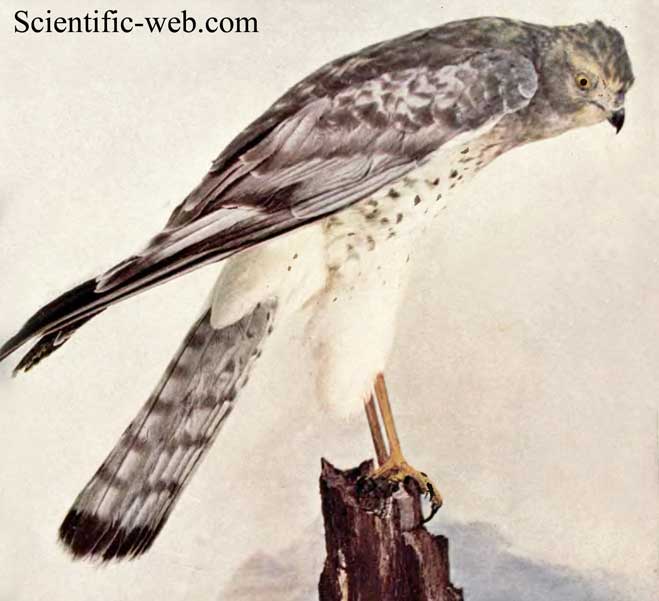
Circus cyaneus, Photo: Michael Lahanas
Superregnum: Eukaryota
Cladus: Unikonta
Cladus: Opisthokonta
Cladus: Holozoa
Regnum: Animalia
Subregnum: Eumetazoa
Cladus: Bilateria
Cladus: Nephrozoa
Superphylum: Deuterostomia
Phylum: Chordata
Subphylum: Vertebrata
Infraphylum: Gnathostomata
Megaclassis: Osteichthyes
Cladus: Sarcopterygii
Cladus: Rhipidistia
Cladus: Tetrapodomorpha
Cladus: Eotetrapodiformes
Cladus: Elpistostegalia
Superclassis: Tetrapoda
Cladus: Reptiliomorpha
Cladus: Amniota
Classis: Reptilia
Cladus: Eureptilia
Cladus: Romeriida
Subclassis: Diapsida
Cladus: Sauria
Infraclassis: Archosauromorpha
Cladus: Crurotarsi
Divisio: Archosauria
Cladus: Avemetatarsalia
Cladus: Ornithodira
Subtaxon: Dinosauromorpha
Cladus: Dinosauriformes
Cladus: Dracohors
Cladus: Dinosauria
Cladus: Saurischia
Cladus: Eusaurischia
Subordo: Theropoda
Cladus: Neotheropoda
Cladus: Averostra
Cladus: Tetanurae
Cladus: Avetheropoda
Cladus: Coelurosauria
Cladus: Tyrannoraptora
Cladus: Maniraptoromorpha
Cladus: Maniraptoriformes
Cladus: Maniraptora
Cladus: Pennaraptora
Cladus: Paraves
Cladus: Eumaniraptora
Cladus: Avialae
Infraclassis: Aves
Cladus: Avebrevicauda
Cladus: Pygostylia
Cladus: Ornithothoraces
Cladus: Ornithuromorpha
Cladus: Carinatae
Parvclassis: Neornithes
Cohors: Neognathae
Cladus: Neoaves
Ordo: Accipitriformes
Familia: Accipitridae
Subfamilia: Circinae
Genus: Circus
Species: Circus cyaneus
Name
Circus cyaneus (Linnaeus, 1766)
Synonyms
Falco cyaneus (protonym)
References
Systema Naturae ed.12: 126.
Vernacular names
aragonés: Alica azul
العربية: مرزة الدجاج
asturianu: Blanquín
azərbaycanca: Tarla belibağlısı
беларуская: Палявы лунь
български: Полски блатар
brezhoneg: Skoul louet
català: Arpella pàl·lida
čeština: Moták pilich
чӑвашла: Кăвак хăлат
Cymraeg: Boda Tinwyn
dansk: Blå Kærhøg
Deutsch: Kornweihe
Ελληνικά: Ορνιθοσιάχινο
English: Hen Harrier
Esperanto: Blua cirkuo
español: Aguilucho pálido
eesti: Välja-loorkull
euskara: Mirotz zuri
فارسی: سنقر
suomi: Sinisuohaukka
føroyskt: Fenheykur
Nordfriisk: Blä hanjüger
français: Busard Saint-Martin
Gaeilge: Cromán nag Cearc
Gàidhlig: Ant-eun fiorm
galego: Gatafornela
Gaelg: Shirragh ny giark
עברית: זרון תכול
hrvatski: Eja strnjarica
Kreyòl ayisyen: Gwo Malfini savann
magyar: Kékes rétihéja
հայերեն: Մկնաճուռակ դաշտային
íslenska: Bláheiðir
italiano: Albanella reale
日本語: ハイイロチュウヒ
ქართული: მინდვრის ძელქორი
қазақша: Түз құладыны
한국어: 잿빛개구리매
lietuvių: Javinė lingė
latviešu: Lauku lija
македонски: Полска еја
монгол: Цагаан элэгт
Bahasa Melayu: Burung Lang Sayap Hitam
Malti: Bugħadam Abjad Prim
Nederlands: Blauwe kiekendief
norsk nynorsk: Myrhauk
norsk: Myrhauk
polski: Błotniak zbożowy
português: Tartaranhão-azulado
rumantsch: Melv da graun
русский: Полевой лунь
davvisámegiella: Jeaggehávut
slovenčina: Kaňa sivá
slovenščina: Pepelasti lunj
shqip: Shqipja e fushës
српски / srpski: Poljska eja - Пољска eja
svenska: Blå kärrhök
Kiswahili: Kipondya Kijivubuluu
ไทย: เหยี่ยวทุ่งแถบเหนือ
Türkçe: Gökçe tuygun
українська: Лунь польовий
Tiếng Việt: Diều hen
中文: 白尾鹞


Circus cyaneus
The hen harrier (Circus cyaneus) is a bird of prey. It breeds in Eurasia. The term "hen harrier" refers to its former habit of preying on free-ranging fowl.[2]
It migrates to more southerly areas in winter. Eurasian birds move to southern Europe and southern temperate Asia. In the mildest regions, such as France and Great Britain, hen harriers may be present all year, but the higher ground is largely deserted in winter.
The northern harrier was formerly considered to be a subspecies of the hen harrier.
Taxonomy
In 1758 the English naturalist George Edwards included an illustration and a description of the hen harrier in the first volume of his Gleanings of Natural History. He used the English name "The blue hawk". Edwards based his hand-coloured etching on a bird that had been shot near London.[3] When in 1766 the Swedish naturalist Carl Linnaeus updated his Systema Naturae for the twelfth edition, he placed the hen harrier with the falcons and eagles in the genus Falco. Linnaeus included a brief description, coined the binomial name Falco cyaneus and cited Edwards' work.[4] The hen harrier is now placed in the genus Circus that was introduced by the French naturalist Bernard Germain de Lacépède in 1799.[5][6] The genus name Circus is derived from the Ancient Greek kirkos, referring to a bird of prey named for its circling flight (kirkos, "circle"). The specific epithet cyaneus is from Latin and means "dark blue".[7] The species is monotypic: no subspecies are recognised.[6]
The hen harrier was formerly considered to be conspecific with the northern harrier.[6][8][9]
Description
Circus cyaneus (male & female)
Bird in flight at an elevation of over 12,500 ft in Pangolakha Wildlife Sanctuary in East Sikkim district, India in the month of November
The hen harrier is 41–52 cm (16–20 in)[10] long with a 97–122 cm (38–48 in) wingspan.[11][12] It resembles other harriers in having distinct male and female plumages. The sexes also differ in weight, with males weighing 290 to 400 g (10 to 14 oz), with an average of 350 g (12 oz), and females weighing 390 to 750 g (14 to 26 oz), with an average of 530 g (19 oz).[10][12] Among standard measurements, the wing chord is 32.8 to 40.6 cm (12.9 to 16.0 in), the tail is 19.3 to 25.8 cm (7.6 to 10.2 in) and the tarsus is 7.1 to 8.9 cm (2.8 to 3.5 in).[12] It is relatively long winged and long tailed.[12]
The male is mainly grey above and white below except for the upper breast, which is grey like the upperparts, and the rump, which is white; the wings are grey with black wingtips. The female is brown above with white upper tail coverts, hence females, and the similar juveniles, are often called "ringtails". Their underparts are buff streaked with brown.[10] Immatures look like females but with less distinct barring, dark brown secondaries dark brown and less-streaked belly.[13]
The female gives a whistled piih-eh when receiving food from the male, and her alarm call is chit-it-it-it-it-et-it. The male calls chek-chek-chek, with a more bouncing chuk-uk-uk-uk during his display flight.[11]
Behaviour
This medium-sized raptor breeds on moorland, bogs, prairies, farmland coastal prairies, marshes, grasslands, swamps and other assorted open areas. A male will maintain a territory averaging 2.6 km2 (1.0 sq mi), though male territories have ranged from 1.7 to 150 km2 (0.66 to 57.92 sq mi).
These are one of the few raptorial birds known to practice polygyny – one male mates with several females. Up to five females have been known to mate with one male in a season. A supplementary feeding experiment on the Orkney islands showed that rates of polygyny were influenced by food levels; males provided with extra food had more breeding females than 'control' males that received no extra food.[14]
The nest is built on the ground or on a mound of dirt or vegetation. Nests are made of sticks and are lined inside with grass and leaves. Four to eight (exceptionally 2 to 10) whitish eggs are laid. The eggs measure approximately 47 mm × 36 mm (1.9 in × 1.4 in). The eggs are incubated mostly by the female for 31 to 32 days. When incubating eggs, the female sits on the nest while the male hunts and brings food to her and the chicks. The male will help feed chicks after they hatch, but does not usually watch them for a greater period of time than around 5 minutes.[15] The male usually passes off food to the female, which she then feeds to the young, although later the female will capture food and simply drop into the nest for her nestlings to eat. The chicks fledge at around 36 days old, though breeding maturity is not reached until 2 years in females and 3 years in males.
In winter, the hen harrier is a bird of open country, and will then roost communally, often with merlins and marsh harriers. There is now an accepted record of transatlantic vagrancy by the northern harrier, with a juvenile being recorded in Scilly, Great Britain from October 1982 to June 1983.[16]
Hunting behaviour
This is a typical harrier, which hunts on long wings held in a shallow V in its low flight during which the bird closely hugs the contours of the land below it. Northern or hen harriers hunt primarily small mammals, as do most harriers. Up to 95% of the diet comprises small mammals. However, birds are hunted with some regularity as well, especially by males. Preferred avian prey include passerines of open country (i.e. sparrows, larks, pipits), small shorebirds and the young of waterfowl and galliforms. Supplementing the diet occasionally are amphibians (especially frogs), reptiles and insects (especially orthopterans).[12] The species has been observed to hunt bats if these are available.[17] Larger prey, such as rabbits and adult ducks are taken sometimes and harriers have been known to subdue these by drowning them in water.[12] Harriers hunt by surprising prey while flying low to the ground in open areas, as they drift low over fields and moors.[10] The harriers circle an area several times listening and looking for prey. Harriers use hearing regularly to find prey, as they have exceptionally good hearing for diurnal raptors, this being the function of their owl-like facial disc.[12] This harrier tends to be a very vocal bird while it glides over its hunting ground.
Mortality and competition
Little information is available on longevity in hen harriers. The longest-lived known bird is 16 years and 5 months. However, adults rarely live more than 8 years. Early mortality mainly results from predation. Predators of eggs and nestlings include raccoons, skunks, badgers, foxes, crows and ravens, dogs and owls. Both parents attack potential predators with alarm calls and striking with talons. Short-eared owls are natural competitors of this species that favor the same prey and habitat, as well as having a similarly broad distribution. Occasionally, both harriers and short-eared owls will harass each other until the victim drops its prey and it can be stolen, a practice known as kleptoparasitism. Most commonly, the harriers are the aggressors pirating prey from owls.[18]
Status
This species has a large range. There is evidence of a population decline, but the species is not believed to be approaching the thresholds for the population decline criterion of the IUCN Red List (i.e., declining more than 30% in ten years or three generations). It is therefore classified as "least concern".[1] In the Britain and Ireland, however, hen harrier populations are in a critical condition, due to habitat loss and illegal killing on grouse moors.[19][20] In England alone there is enough suitable habitat for over 300 pairs of breeding Hen Harriers but in 2022 there were only 34 successful nests. Furthermore, many of the young birds don’t even make it through their first year, let alone survive until the age of two, when they can first breed. Most UK Hen Harriers are in Scotland but even there its population declined by 27% between 2004 and 2016.
Relationship with humans
In some parts of Europe people believed that seeing a harrier perched on a house was a sign that three people would die. Unlike many raptors, hen harriers have historically been seen favorably by farmers because they eat predators of quail eggs and mice that damage crops. Harriers are sometimes called "good hawks" because they pose no threat to poultry as some hawks do.[citation needed]
Forestry and hen harriers
Eggs, Collection Museum Wiesbaden
The hen harrier is a bird of open habitats such as heather moorland and extensive agriculture. However, much of its range, particularly in Ireland and parts of western Britain, has been (and continues to be) afforested, predominantly with non-native conifers such as Sitka spruce (Picea sitchensis) from North America.[21][22] Hen harriers nest and forage in commercial forestry when it is young, before the canopy closes (typically at between 9–12 and years old), but do not make much use of thicket and subsequent growth stages,[23][24] which typically comprise between 2⁄3 and 3⁄4 of the commercial growth cycle. Where forests replace habitats that were used by hen harriers they will therefore tend to reduce overall habitat availability.[25] However, where afforestation takes place in areas that were previously underutilised by hen harriers, it may increase the value of such areas to this species in the long-term.[26][27] Areas dominated by forestry may remain suitable to hen harriers provided that a mosaic of age classes is maintained within the forest, such that areas of young, pre-thicket forest are always available.
References
BirdLife International (2016). "Circus cyaneus". IUCN Red List of Threatened Species. 2016: e.T22727733A94958761. doi:10.2305/IUCN.UK.2016-3.RLTS.T22727733A94958761.en. Retrieved 13 November 2021.
"Hen harrier". RSPB. Retrieved 2016-01-19.
Edwards, George (1758). Gleanings of Natural History, exhibiting figures of quadrupeds, birds, insects, plants &c... (in English and French). Vol. 1. London: Printed for the author, at the College of Physicians. pp. 33–34 Plate 225.
Linnaeus, Carl (1766). Systema naturae : per regna tria natura, secundum classes, ordines, genera, species, cum characteribus, differentiis, synonymis, locis (in Latin). Vol. 1, Part 1 (12th ed.). Holmiae (Stockholm): Laurentii Salvii. p. 126.
Lacépède, Bernard Germain de (1799). "Tableau des sous-classes, divisions, sous-division, ordres et genres des oiseux". Discours d'ouverture et de clôture du cours d'histoire naturelle (in French). Paris: Plassan. p. 4. Page numbering starts at one for each of the three sections.
Gill, Frank; Donsker, David; Rasmussen, Pamela, eds. (January 2022). "Hoatzin, New World vultures, Secretarybird, raptors". IOC World Bird List Version 12.1. International Ornithologists' Union. Retrieved 9 June 2022.
Jobling, James A. (2010). The Helm Dictionary of Scientific Bird Names. London: Christopher Helm. p. 109, 126. ISBN 978-1-4081-2501-4.
Etherington, Graham J.; Mobley, Jason A. (2016). "Molecular phylogeny, morphology and life-history comparisons within Circus cyaneus reveal the presence of two distinct evolutionary lineages". Avian Research. 7 (1): 17. doi:10.1186/s40657-016-0052-3.
Chesser, R. Terry; Burns, Kevin J.; Cicero, Carla; Dunn, John L.; Kratter, Andrew W; Lovette, Irby J; Rasmussen, Pamela C.; Remsen, J.V. Jr; Rising, James D.; Stotz, Douglas F.; Winker, Kevin (2017). "Fifty-eighth supplement to the American Ornithological Society's Check-list of North American Birds". The Auk. 134 (3): 751–773. doi:10.1642/AUK-17-72.1.
del Hoyo, J.; Elliott, A.; Sargatal, J., eds. (1994). Handbook of the Birds of the World. Vol. 2: New World Vultures to Guineafowl. Barcelona: Lynx Edicions. ISBN 978-84-87334-15-3.
Mullarney, Killian; Svensson, Lars; Zetterstrom, Dan; Grant, Peter (1999). Collins Bird Guide. London: HarperCollins. p. 86. ISBN 978-0-00-219728-1.
Ferguson-Lees, J.; Christie, D.A. (2001). Raptors of the World. London: Christopher Helm. ISBN 978-0-7136-8026-3.
Woo-Shin Lee, Tae-Hoe Koo, Jin-Young Park (2005). A field guide to the birds of Korea. p. 106. ISBN 978-8995141533.
Amar, A.; Redpath, S. M. (2002). "Determining the cause of the hen harrier decline on the Orkney Islands: an experimental test of two hypotheses". Animal Conservation Forum. 5 (1): 21–28. Bibcode:2002AnCon...5...21A. doi:10.1017/S1367943002001038. ISSN 1469-1795. S2CID 85772194.
Weidensaul, Scott (1996). Raptors: the birds of prey. Lyons & Burford. ISBN 978-1-55821-275-6.
Fraser, P.A.; et al. (2007). "Report on rare birds in Great Britain in 2006" (PDF). British Birds. 100 (12): 707.
Mikula, P.; Morelli, F.; Lučan, R. K.; Jones, D. N.; Tryjanowski, P. (2016). "Bats as prey of diurnal birds: a global perspective". Mammal Review. 46 (3): 160–174. doi:10.1111/mam.12060.
"Short-eared Owl – Asio flammeus". owlpages.com. 24 July 2013. Retrieved 1 December 2015.
"Welcome to the hen harrier LIFE project". RSPB. Retrieved 2016-02-12.
"Save the Skydancer". BirdWatch Ireland. Archived from the original on 2024-02-09.
Barton, C.; Pollock, C.; Norriss, D.W.; Nagle, T.; Oliver, G.A.; Newton, S. (2006). "The second national survey of breeding hen harriers Circus cyaneus in Ireland". Irish Birds. 8: 1–20.
Fielding, A.; Haworth, P.; Whitfield, P.; McLeod, D. (2010). "Raptor species conservation frameworks: Hen Harrier framework project final report". Edinburgh: Scottish Natural Heritage.
Madders, M. (2000). "Habitat selection and foraging success of hen harriers (Circus cyaneus) in west Scotland". Bird Study. 47 (1): 32. Bibcode:2000BirdS..47...32M. doi:10.1080/00063650009461158. S2CID 85192594.
O'Donoghue, B. (2004). The Hen Harrier in Ireland (Master's thesis). University College Dublin.
O'Flynn, W.J. (1983). "Population changes of the hen harrier in Ireland". Irish Birds. 2: 337–343.
Wilson, M.W.; Irwin, S.; Norriss, D.W.; Newton, S.F.; Collins, K.; Kelly, T.C.; O'Halloran, J. (2009). "The importance of pre-thicket conifer plantations for nesting Hen Harriers (Circus cyaneus) in Ireland". Ibis. 151 (2): 332. doi:10.1111/j.1474-919X.2009.00918.x.
Haworth, P.F.; Fielding, A.H. (2009). An assessment of woodland habitat utilisation by breeding hen harriers. SNH Project No. 24069. Edinburgh: Scottish Natural Heritage.
Retrieved from "http://en.wikipedia.org/"
All text is available under the terms of the GNU Free Documentation License

